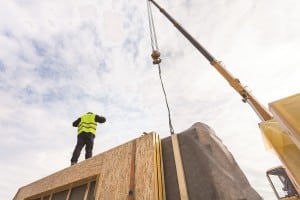A relatively small group of NIMBY homeowners has paralyzed the housing market in the suburbs of Boston, choking off new construction and driving up prices and rents.
That’s the verdict of a groundbreaking new report out of BU, which sifted through thousands of comments made at zoning and planning board hearings on new housing proposals in 97 different towns and cities in Massachusetts.
Older white homeowners, most of them men, were the ones showing up at these meetings. And nearly two-thirds of the public comments at these hearings, or 63 percent, were opposed to new housing, with just 14 percent in favor.
But just what’s behind this entrenched opposition to new homes, apartments and condos, especially in the suburbs, where it has been the fiercest?
Is it a case of “wealthy white homeowners” taking advantage of local zoning laws to “protect their investments?” That’s what one of a pair of BU professors who wrote the report recently suggested to the Globe.
Or are more emotional and irrational forces driving this opposition, from general anxiety over change to racist fears that new apartments and new homes will bring people of different skin colors and backgrounds to town?
Having spent nearly three decades writing about housing in form or another – and having attended my fair share of heated zoning hearings – I believe the latter is true.
Facts Don’t Change Minds
The idea that wealthy white homeowners are banding together as a class to protect home values bestows far more rationality on the opposition to new housing than it deserves.
Yes, opponents to new housing will cite all sorts of seemingly factual arguments about why a new apartment complex or subdivision will be bad for the neighborhood or for the town. The problem is there’s little evidence that new housing is harmful to communities or, on the micro level, to individual neighborhoods. It’s just the opposite.
The NIMBY types who too often dominate the hearings on new housing proposals will claim the value of their homes will drop after a new rental building opens, even when studies out of Harvard and other institutions have found that multifamily housing has little impact on values, and, when it does, it is positive, not negative.
They’ll complain about traffic, when again, there’s little evidence that apartments are contributing to our clogged roads. In fact, I’ve heard the traffic argument used to argue for a commercial or retail use for a property instead of residential, which should make zero sense to anyone capable of doing fifth grade math.
And they’ll drum up all sorts of scary-sounding faux environmental concerns that no amount of facts and reason – or expensive studies paid for by the developer at the request of local officials – will ever dispel.

Scott Van Voorhis
Let’s not forget the crowded schools argument – that new apartments will dump more kids in the local schools and driving up taxes – a fear thoroughly debunked in studies by UMass Dartmouth and other local research institutions.
It’s not logic or economic interests that are driving the intensive and relentless opposition to new housing. It’s fear and prejudice.
It’s a point taken by Katherine Levine Einstein, a BU political science professor and one of the report’s authors.
“We are very aware of change and it makes people anxious,” she said. “People are far more sensitive to potential losses than they are to equivalent-sized gains.”
In fact, the BU report itself furnishes quite a bit of evidence to back this up.
“Neighborhood character” was one of the major objections opponents have been raising during hearings on new housing in towns and suburbs across Eastern Massachusetts, according to the BU study. And of those who cited neighborhood character, 11 percent used “racially coded” language.
A Beverly man, for example, slammed the design of a building as “ridiculous,” warning it would make the North Shore town look Chelsea, which happens to be 62 percent Hispanic.
“He went on to ask if there is a restriction put on the building that there is to be no Section 8 housing in the building,” the report notes.
The reference to Section 8 housing is something I’ve heard thrown out a number of times over the years by opponents, often about projects that are mainly market rate. The inference is clear – that somehow the apartment project will attract welfare recipients to the town.
Another is the idea that proposals for new, mainly market-rate apartments with a sprinkling of affordable units will somehow morph into large, troubled public housing projects, straight out of the Chicago’s South side. Sounds ridiculous, but that’s the kind of crap people will spout, and keep spouting, long after they have been confronted with reason and facts.
Still, the study notes that most of the comments that pertained to neighborhood character could not be classified as using “racially coded” language.
That may be – and it might also be that some people are more careful about what and how they say it than the Beverly blowhard cited above even if, at heart, they are fearful of where their new neighbors will come from and what they will look like.
Maybe things have changed, but I never heard any pushback when someone pulled the Section 8 bogeyman out at a hearing on a new apartment development, whether from the public or the elected officials on the planning or zoning boards. Maybe others were cringing as well, I don’t know.
The animus against new housing, and especially new apartment construction, is strong.
And frankly, there’s a lot of fear and gutter racism masquerading as concern about traffic, density and “neighborhood character.”
Scott Van Voorhis is Banker & Tradesman’s columnist; opinions expressed are his own. He may be reached at sbvanvoorhis@hotmail.com.




 |
| 

